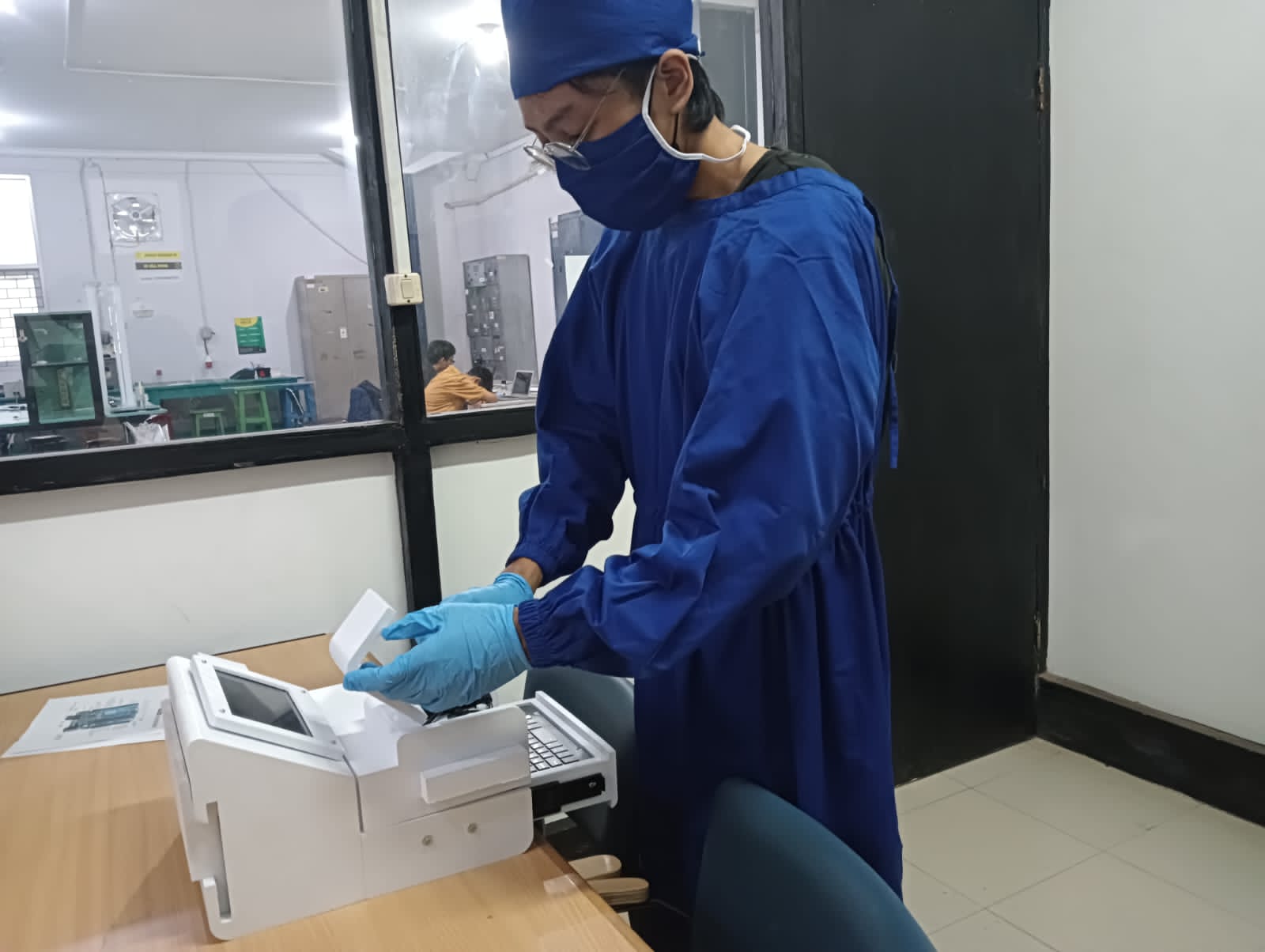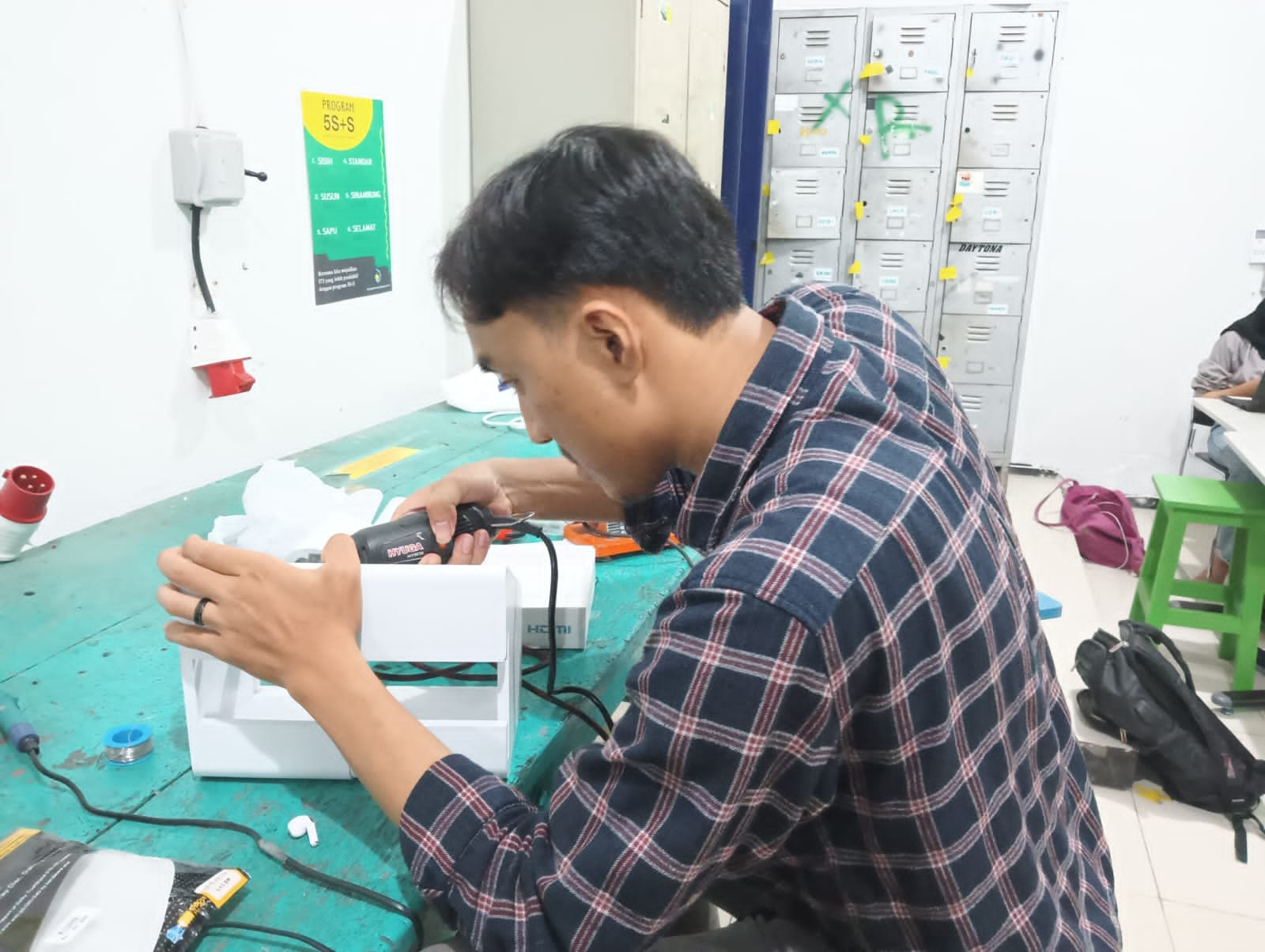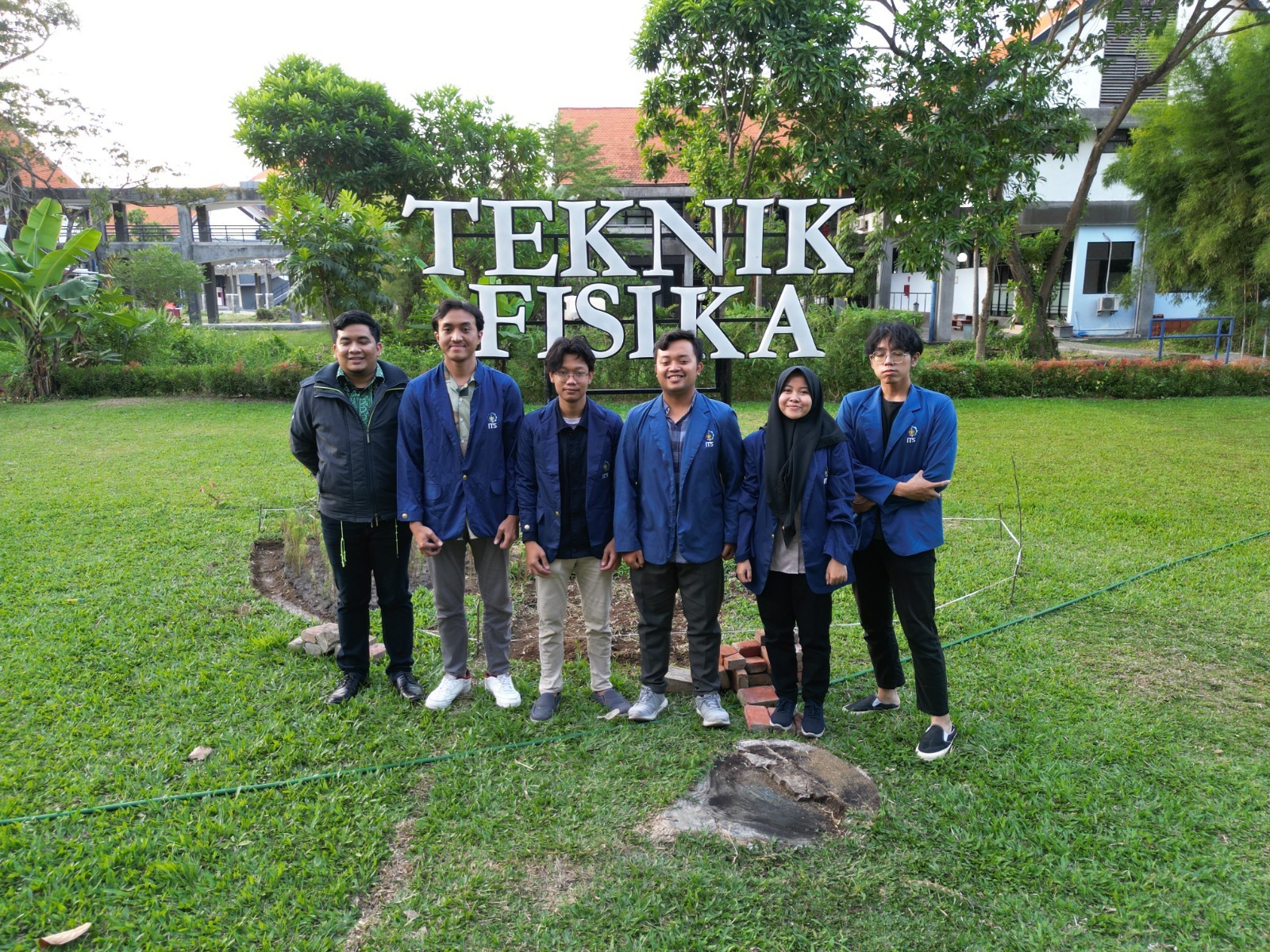ITS Students Innovate an Alternative for COPD Detection via Saliva

Team member, Muhammad Ardi Rizki Arasi, when measuring permittivity values on saliva samples as a data source in the deep learning model
ITS Campus, ITS News – As cases of death due to Chronic Obstructive Pulmonary Disease (COPD) increase, it is necessary to have a disease detection system, one of which uses a fairly complex spirometer. This inspired a team of students from Insittut Teknologi Sepuluh Nopember (ITS) to innovate an alternative COPD detection system by changing the permittivity value of saliva called CoDetector.
COPD or also called Chronic Obstructive Pulmonary Disease (COPD) is a long-term inflammatory disease of the lungs that often attacks active and passive smokers. COPD sufferers will experience damage to the bronchi and lining of the lungs or pleura. To detect COPD, the Global Initiative for Chronic Obstructive Lung Disease (GOLD) has a standard detection system using a spirometer.
Team leader Fani Ahmad Refansah said that the COPD detection system using a spirometer was considered complex because it was expensive, had a long detection time, and required a skilled operator. Not only that, detection using a spirometer cannot be applied to patients who experience exacerbations or worsening respiratory symptoms. “So an alternative COPD detection system is needed to overcome this complexity,” he explained.

One of the team members, Fabel Azzam Dedat, when fabricating a disease detection system for Chronic Obstructive Pulmonary Disease (COPD)
Fani revealed that there is a study which states that COPD disease can also be detected using the composition of mucosal secretions. This happens because COPD can affect the viscosity of the sufferer’s mucosa. Apart from that, COPD patients also experience decreased levels of aquaporin-5 in saliva which affects its permittivity properties.
The permittivity property, added Fani, is the ability of an object to store electrical potential energy under the influence of an electric field. This permittivity value can be determined by using parallel plate conductors. When saliva is placed in a container in the form of a plastic cuvette between two parallel plate conductors, the capacitance value will be obtained. “By using physics equations, the permittivity value will be obtained,” he explained.
Based on these facts, Fani and the team under the guidance of lecturer Dr. Rer Nat Ruri Agung Wahyuono ST MT succeeded in innovating a COPD detection tool using a capacitive biosensor based on the permittivity value of saliva. Not only that, deep learning algorithms are also implemented to analyze other medical data, such as the patient’s age, gender and smoking history. “The application of this algorithm aims to strengthen the diagnosis of COPD,” he added
.

A team of ITS Engineering Physics Department students who succeeded in innovating an alternative detection of Chronic Obstructive Pulmonary Disease (COPD) through mucosal secretions
Through Fani’s collaboration with Fabel Azzam Dedat, Muhammad Husein Az Zahro Saifulloh, M Ardi Riski Arasi, and Laila Nurfitria Devi, the detector has an accuracy of up to 91.4 percent and a precision of 88.2 percent. Not only that, the CoDetector innovation has also brought the ITS Student Creativity Program team in the Karsa Cipta Category (PKM-KC) to win a silver medal at the 2023 National Student Science Week (Pimnas).
In the future, the team from the Advanced Functional Materials Laboratory, ITS Physics Engineering Department hopes that this innovation can continue to develop its accuracy so that it can become an alternative COPD detector. “With a relatively affordable cost, hopefully this tool can be used by lower level health facilities,” he concluded hopefully. (ITS Public Relations)
Reporter: Mohammad Febryan Khamim
Related News
-
ITS Graduate Earns Three Degrees at the Age of 21
ITS Campus, ITS News — Another proud achievement has been made by a graduate of Institut Teknologi Sepuluh Nopember
February 03, 2024 21:02 -
ITS and East Java Education Office Collaborate to Improve Teachers’ Welfare
ITS Campus, ITS News — The welfare of educators, particularly honorary teachers in East Java, still requires serious attention.
February 03, 2024 21:02 -
ITS Gold Medals Surge in Gemastik XVII 2024
ITS Campus, ITS News – Demonstrating its growing excellence in the field of information technology, Institut Teknologi Sepuluh Nopember
February 03, 2024 21:02 -
PT PAL Indonesia Encouraged ITS to Collaborate Toward Indonesia Emas 2045
ITS Campus, ITS News — PT PAL Indonesia (an Indonesian naval engineering company) invites Institut Teknologi Sepuluh Nopember (ITS) to
February 03, 2024 21:02
